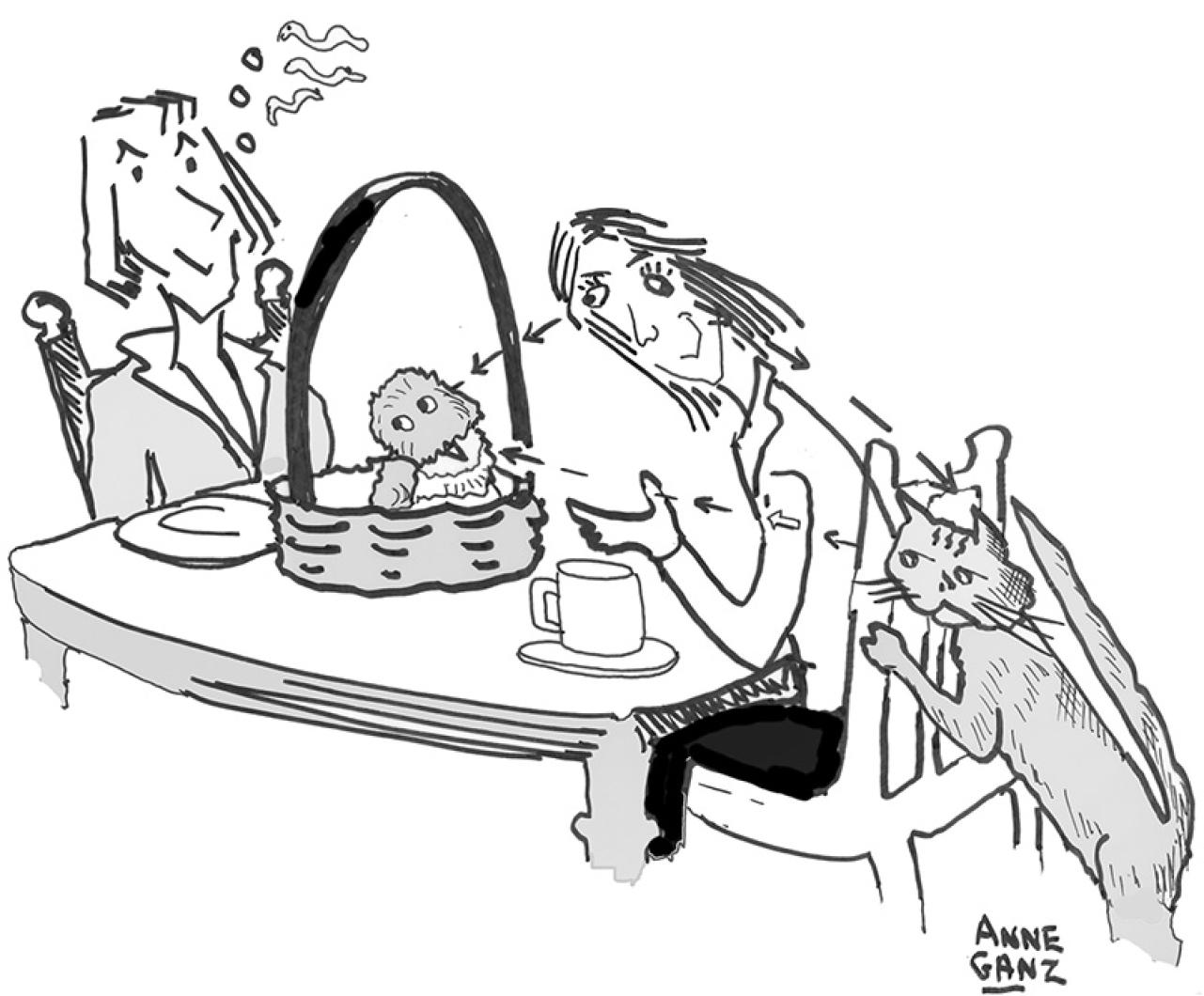On Sunday, I had an unexpected visitor. It was a baby barn swallow that Becky Sanders, who works at the Farm Institute, had nestled in her hand for warmth. She’d found it on the road at Blackthorn Farm in West Tisbury, where she keeps her horse, Sunday. I was expecting Becky for breakfast, but not the bird.
“What should I feed it?” Becky wanted to know. “And where can I keep it? I know it’s hungry and thirsty and cold. It must have fallen out of the nest. I tried putting it on the limb of a tree, but it didn’t like that. Have you a basket where I can keep it — preferably with something cuddly in it to keep it warm?”
I descended to the cellar and came up with an Easter basket with purple paper straw and three leftover jelly beans still in it.
The two-inch-long baby barn swallow — hungry though it may have been — clearly wasn’t interested in stale jelly beans, but it nestled happily down in the paper straw while Becky and I munched oatmeal breakfast squares and Portuguese sweet rolls. Meanwhile, my hunter cat, Vercingetorix, was hungry, too, and was circling around the dining room table, looking up curiously at the Easter basket that he knew had something more tempting than jelly beans in it.
I warned Becky that his hunting instincts knew no limits and a two-inch-long baby barn swallow would undoubtedly be a tasty appetizer. After that, she kept one eye on the bird and one on my cat as she crunched her breakfast squares.
Becky said she thought the bird was thirsty even though she’d given it water after she picked it up. She didn’t tell me how she knew, however. Apparently she expected me, since I write occasionally about the natural world, to know how to give food and drink to baby birds. She was mistaken about that.
I was, however, about to head for my late husband Tom Cocroft’s library of bird books when Becky looked up on her iPhone the phrase Baby Barn Swallow Food and Drink (or something like that) and announced that fresh cricket bodies, mealworms or frozen bloodworms ground to a puree in a blender were tasty treats for baby barn swallows, along with adult barn swallow feces, also ground in the blender, with a little yogurt added for flavor.
Happily, she did not ask if she could use my blender. That may have been because she hadn’t yet had time to go looking for mealworms in my over-grown garden, if they exist there at all. That’s unlikely since, it turns out, they’re not worms at all, but larvae of some sort of beetle. I had also told her I was sure there would be no crickets easily caught in the morning. As for frozen bloodworms, getting those would have involved a trip to a bait shop where they’re kept on hand, frozen, for fishermen.
Had Becky actually asked about my blender, I might have hesitated, even though, without the right sustenance, the baby bird’s life could be in danger. It was, however, still quite happily nestled in the purple artificial straw and was even chirping now and then — as long as Vercingetorix was not in sight, licking his chops.
After a quick survey of my blueberry bushes and cherry tree to see if they were in need of netting to save their fruit from grown-up birds, Becky headed home, gingerly carrying the baby bird in the Easter basket out to her car.
Then, just after she had left, Brigitte Cornand of the West Tisbury Dumptique called me. Since she lives at Flat Point Farm, on the edge of Tisbury Great Pond, and feeds all manner of birds and animals that come to her door, I asked her what a baby barn swallow might like for breakfast.
“The yolk of a soft-boiled egg offered on the end of a stick, but the yolk must not be too hot,” she said without hesitation. “I know because that’s what I always offer under such circumstances, and the birds love it.”
I passed on this dietary information to Becky on the phone. It sounded like a much more inviting baby bird breakfast than crickets or mealworms or bloodworms ground up in her (or my) blender. I don’t use the blender very often, but all the same.
In any case, I (but not Vercingetorix) wish the baby barn swallow well.




Comments (3)
Comments
Comment policy »